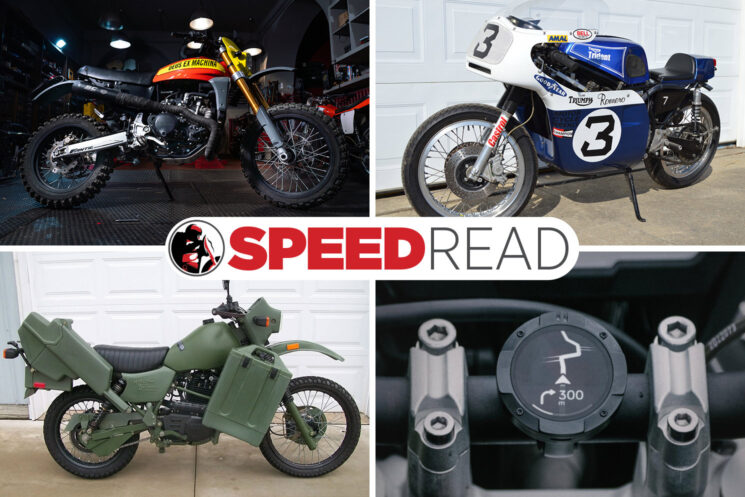
Deus ex Machina leads this week’s round-up, with a Fantic Caballero scrambler that tips its hat to the Fantic enduros of the 70s. We also profile Beeline’s new motorcycle navigation device, a rare 1990s Harley-Davidson military bike, and a stunning Triumph Trident T150 Gene Romero replica.
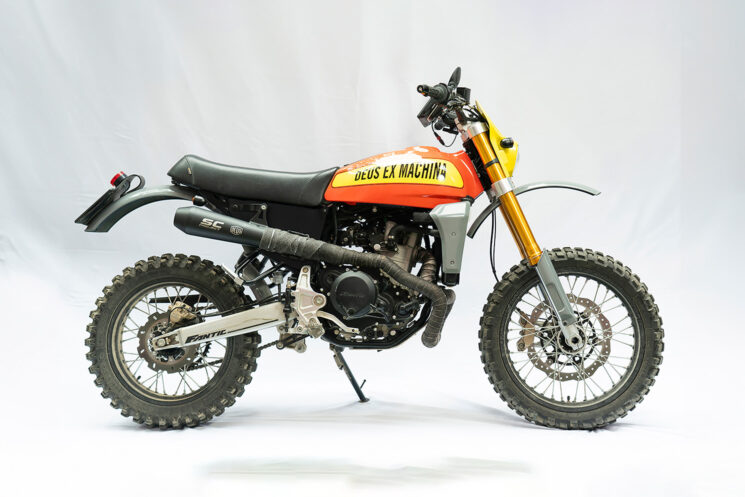
Fantic Caballero 500 by Deus ex Machina Milan With its upright riding position, scrambler styling, and punchy 449 cc single-cylinder engine, it’s a mystery why the Fantic Caballero 500 isn’t more popular. The Italian company started making motorcycles in 1968, including enduros, mini-bikes, and go-karts. The original Caballero was an enduro bike—a 50 cc two-stroke with a bright red tank, yellow number boards, and chunky off-road wheels and tires.
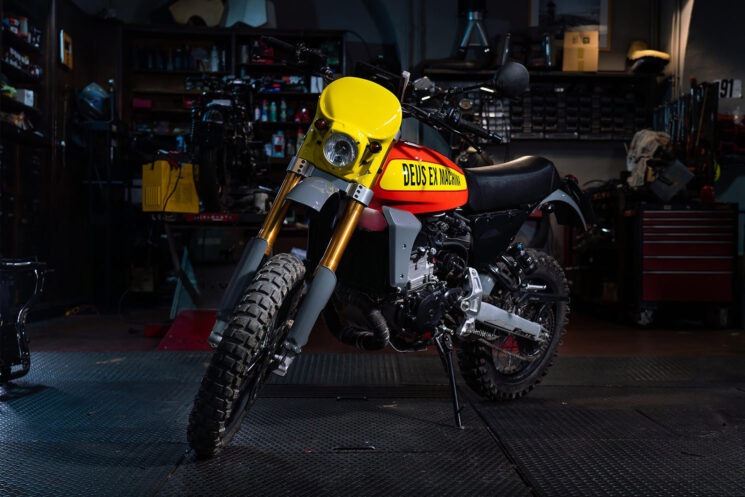
When the team at Deus ex Machina Milan got their hands on a new Fantic Caballero 500, they didn’t waste any time injecting some of the original Cabellero’s styling into the new bike. Starting with the front end, they took the LED headlight off and replaced it with a robust, vintage-style headlight and cowling, finished in bright yellow.
The front cowl barely hides the dashboard, which consists solely of a Garmin Tread navigation unit. A new high-mount alloy front fender was bolted on too, and painted grey.
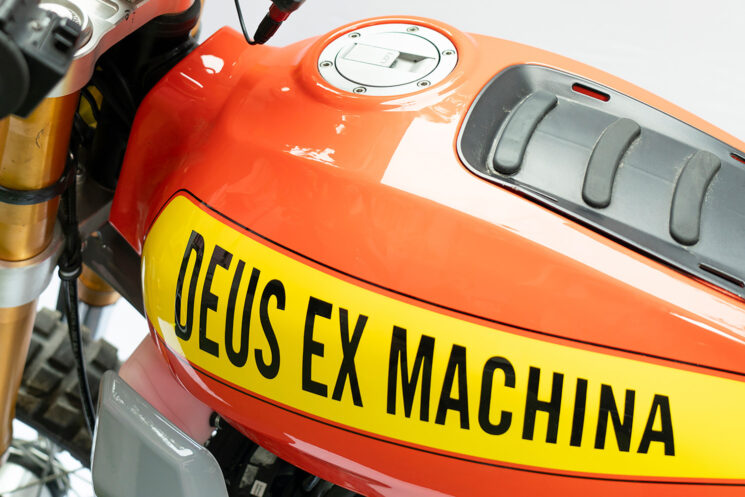
Deus repainted the stock fuel tank next. The red matches the original Caballero design, with an added streak of yellow and the Deus logo emblazoned across the side.
The factory seat was a little thin and didn’t suit the vintage vibe, so the Deus team fitted a custom seat, made in the style of the original. It’s narrow, generously padded, and looks like a great place to deposit one’s derriere—especially behind the tall, wide handlebars. The factory rear fender and tail light were replaced with custom units, giving the bike a decidedly vintage enduro vibe.
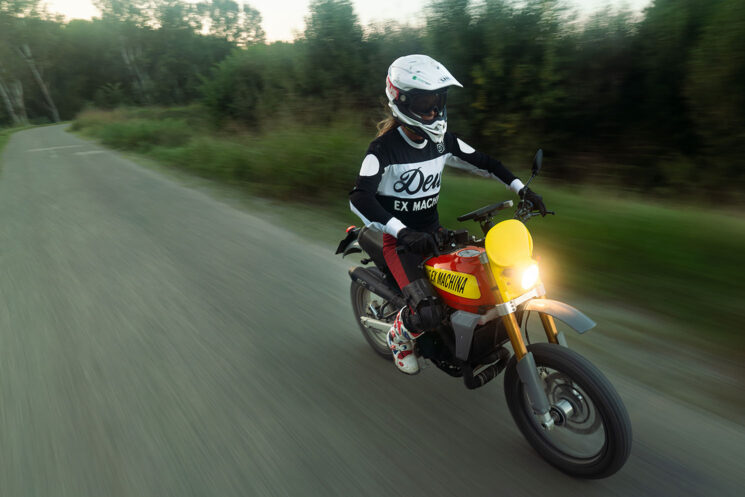
Moving to the exhaust, Deus kept the stock headers, but (rather divisively) ditched the carbon fiber heat shield and plastic side cover, opting for black heat wrap instead. An SC-Project x Deus muffler was grafted on to help the big single breathe easy.
The team at Deus Milan has done a great job adding some 70s scrambler styling to the new Caballero. Given the choice between an original Caballero and this, we know which one we’d prefer as a daily ride—although we’d keep the little 50 around for weekend jaunts. [Source]
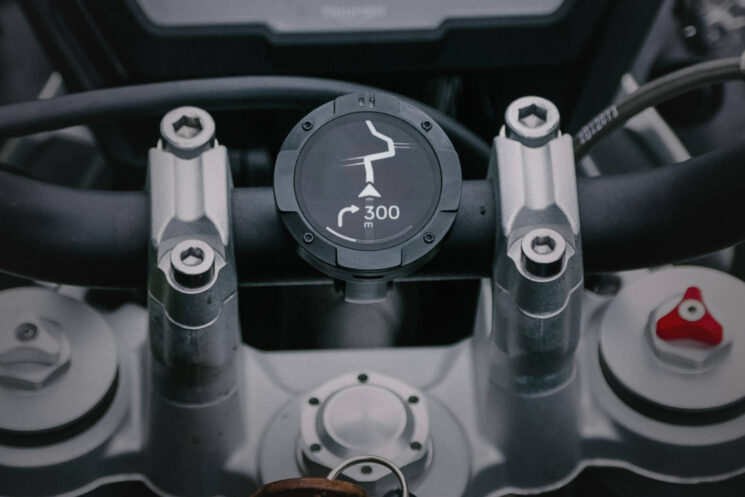
Beeline Moto II navigation device When UK-based Beeline launched its first motorcycling navigation device five years ago, it was a big deal. The small, puck-shaped instrument was unobtrusive, easy to mount on any bike, and just downright cool. Beeline Moto was the modern, minimalist answer to motorcycle navigation.
We had a great time using the original, and so did over 100,000 other motorcyclists. To date, Beeline users from around the world have navigated almost 87,000,000 miles. All those miles have been put to great use in the Beeline Moto smartphone app, which pairs with the Beeline Moto device (which, again, is one of the best motorcycle navigation apps out there).
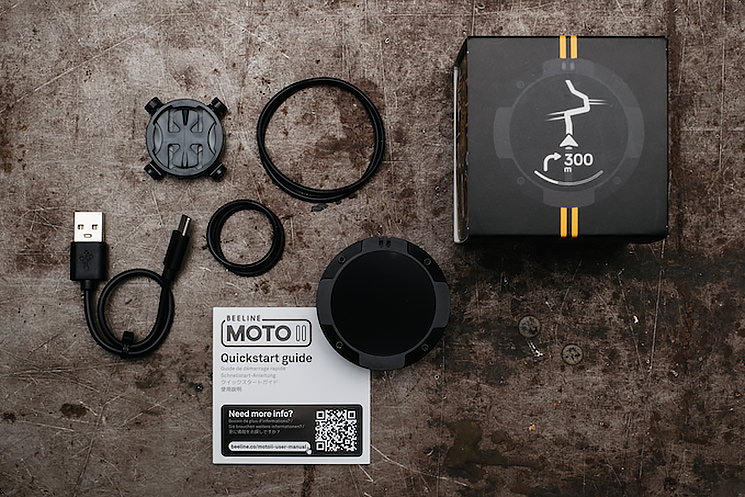
While we loved using the original Beeline Moto, it was not without its shortcomings. The small screen only had enough space to relay an arrow indicating which direction to turn, and how far away that turn was. This was fine for rides through the countryside—but for congested, inner-city streets with innumerable twists and turns, it just couldn’t keep up.
Now Beeline has listened to their scores of users and put that real-world data to use, to release a follow-up device—the Beeline Moto II. At first glance, the Moto II is only 3 mm larger than the old unit. However, the original had a large black bezel that has now been removed, meaning the useable screen area has more than doubled in size. That means the resolution has doubled and the display itself has been upgraded to an IPS TFT.
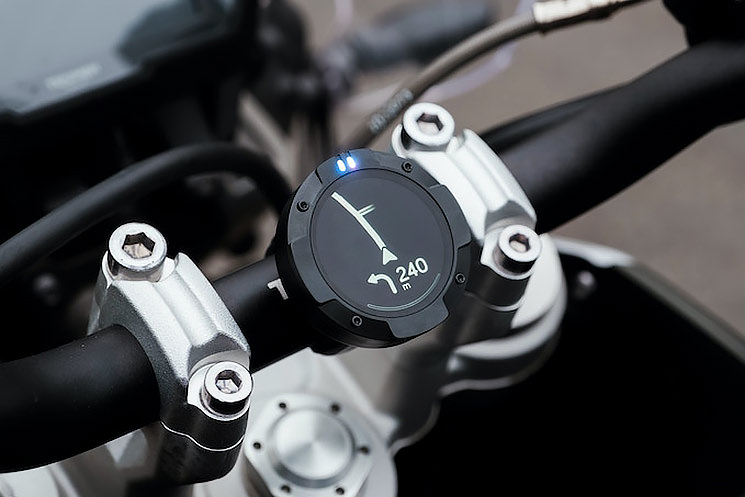
It now houses a 600mAh battery and a much-needed USB-C charge connection (but also keeps its proprietary pogo pin ride charging system). All that is good news, but the best news of all is that Beeline Moto II features a completely revamped navigation user interface.
Riders are now treated to a familiar-looking map layout with advanced turn-by-turn and compass navigation modes, so that getting lost in the city is no longer a problem. The new model also now includes two flashing LED lights and sound to attract attention, and now uses two rocker-type, glove-friendly switches instead of the original round buttons.
Riders still need to connect their phones to the Beeline Moto II and still need to use the Beeline Moto app, which is a downer for anyone married to Google Maps. You could say that mounting a phone on the handlebars is easier, and you’d be right—but that’s not the true purpose of the Beeline. Along with phone cameras becoming increasingly fragile and susceptible to motorcycle vibrations, the Beeline Moto II is the solution to a world of distractions.
At the time of writing this, the Beeline II has made more than five times its crowdfunding target on Kickstarter—a testament to the reputation built by the original unit. As nerdy early adopter types, we can’t wait to give this one a go.
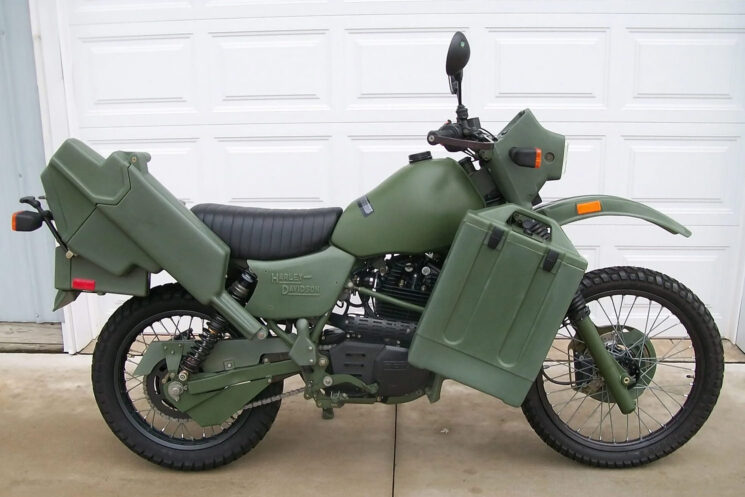
For sale: Harley-Davidson MT500 military bike Harley-Davidson’s historic war-effort motorcycles demonstrate that, although The Motor Co. is usually known for one thing, they can still pivot when they have to (or when they are told to). H-D built the J model for WWI as motorcycles were a proven way to get messages to and from the front lines quickly. WWII saw Harley build the WLA, which was then followed up with the XA (Experimental Army)—a lesser-known, low-production model that used a reverse-engineered BMW airhead engine and frame.
After the two world wars, Harley Davidson bought 50 percent of an Italian aircraft company’s motorcycle division. Enter the Harley Davidson Aermacchi—a sporty single-cylinder more akin to a Ducati Mach 1 or MV Agusta 250 than the panhead. AMF Harley-Davidson eventually bought the rest of the Aermacchi motorcycle company in 1974, which was then sold to Cagiva in 1978.
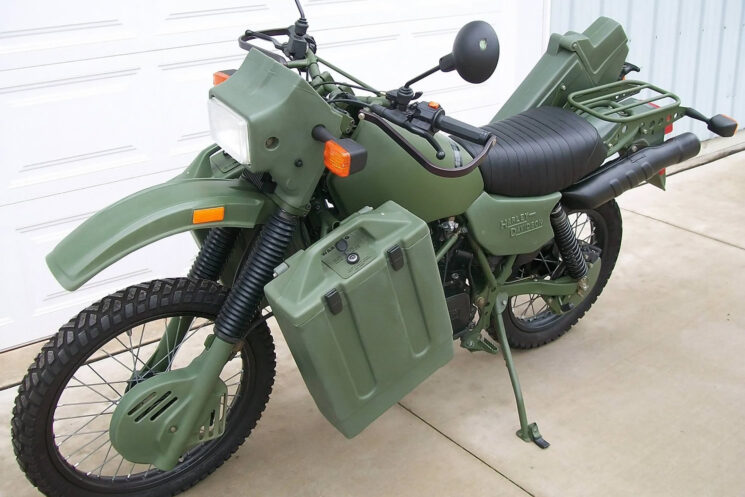
The bike you see here is therefore a mixture of Harley’s previous ventures—a motorcycle originally developed in Italy and then rebadged as a Harley-Davidson in the hope of getting a military contract. This is the Harley-Davidson MT500.
It has a 482 cc Rotax engine, which was originally developed in Italy by SWM, before being stuck in a military motorcycle, designed by the the England-based Armstrong-CCM company in 1984. Armstrong then sold the motorcycle’s production to Harley-Davidson in 1987, just a few years later. H-D took the Rotax-powered Armstrong and just slapped an H-D badge on the side.
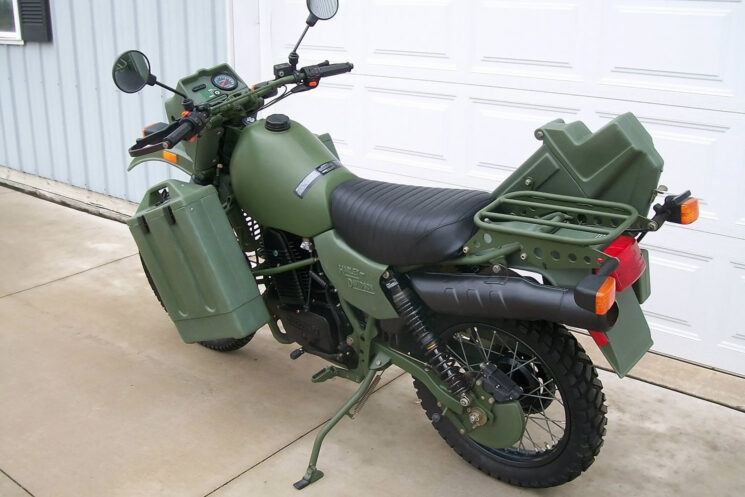
The enduro-style bike was tough, reliable, and (probably) cheap to make. There’s a whole lot of plastic involved, which is perfect for the army who wanted something quick to repair. The engine has a single overhead cam, four valves, and a five-speed transmission, and the whole package weighed around 350 pounds.
All the panniers are plastic and water-resistant, with the large front boxes capable of carrying all sorts of accouterments. There’s no guessing what the rear pannier is for—it was specifically developed to carry an assault rifle, like an M16.
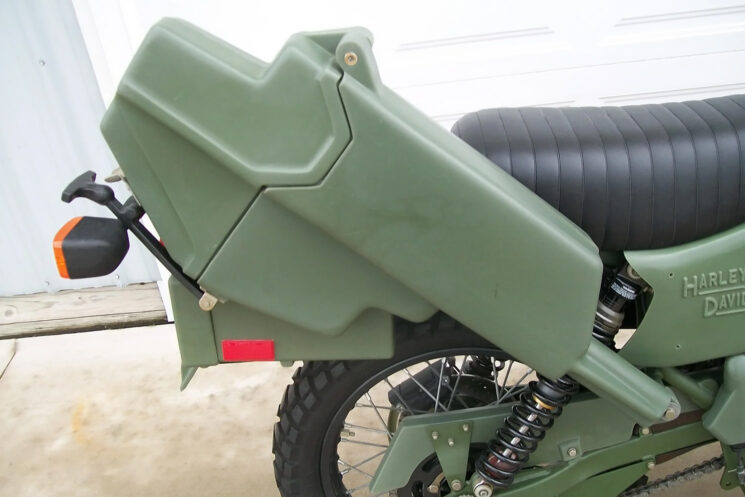
Harley didn’t end up getting the military contract, even though they produced about 500 of these bikes, making them considerably rare. This one, in particular, may be the unicorn of all MT500s, since it only has eight miles on the odometer.
If you’d like to take home this piece of American motorcycling history you can bid for it now on Bring a Trailer. [Source]
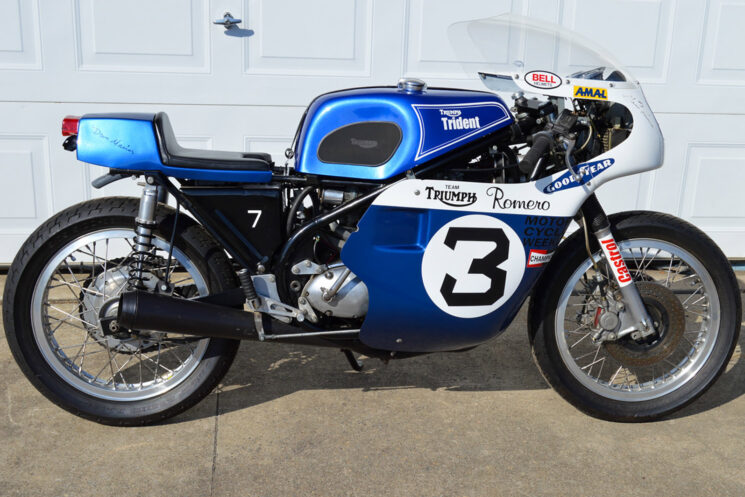
For sale: 1969 Triumph Trident T150 Gene Romero Daytona replica If you’ve never heard the purr of an old Triumph Trident T150 triple, do yourself a favor and scroll down. The original Triumph Trident was the British firm’s answer to the Honda’s new kid on the block—the CB750. But instead of building a big four, they opted for an inline three-cylinder engine, mixing the high-revving of an inline-four with the character, charm, and bottom end of a big twin.
This particular example from 1969 has been built as a race replica in honor of Gene Romero. Gene, who passed in 2019, was an American road racing legend who piloted a Trident T150 for Team Triumph. At the 1970 Daytona 200 (the last time they used the full oval course for motorcycle racing), he set a qualifying lap record of 157.3 mph.
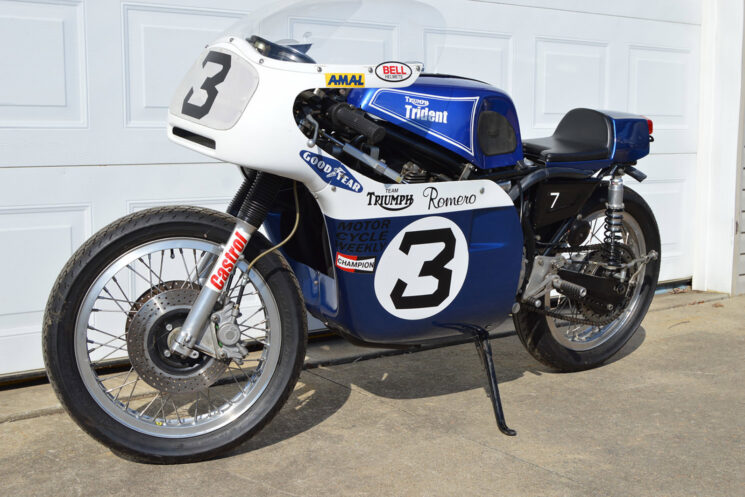
The bike started life as a stock T150. The genuine racing frame was supplied by former Triumph Race Team Manager Danny Macias and is made from chromoly tubing. This adds strength and takes away about 14 lbs of weight off. Being similar to a Rob North or Miles Engineering frame, it has racing heritage built in.
The engine is (apparently) mostly stock, with the owner claiming that a quick peek down the bores yields a stock Triumph piston, not a high-compression racing item. The engine cases have never been split, and it even starts the first or second kick thanks to an updated electronic ignition.
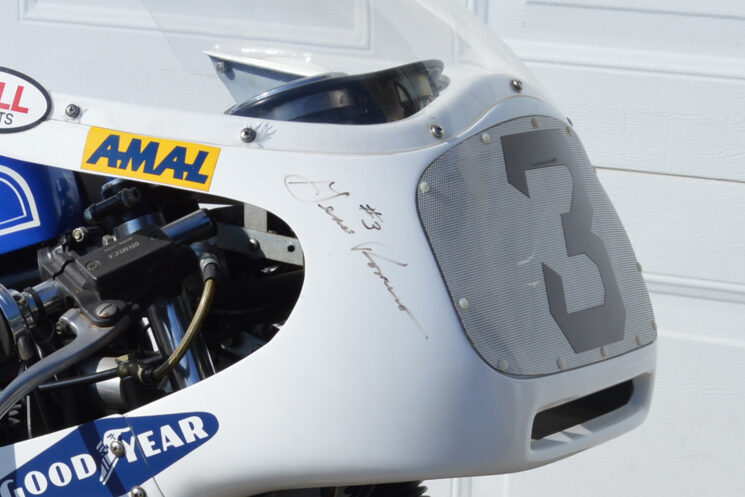
The front fairing, tank, and seat are all fiberglass. The fairing wears the number three and has a distinctive letterbox-style opening at the front, just like Gene Romero’s bike, and oozes 70s cool. Gene signed the fairing himself, before his passing, and there’s another signature from Danny Macias on the tail.
A steering damper keeps the front end in check, while the brakes are from Grimeca. The front brakes have been kitted with stainless steel braided lines, a worthwhile upgrade to any bike of this age. The back, however, is still an old-school drum setup.
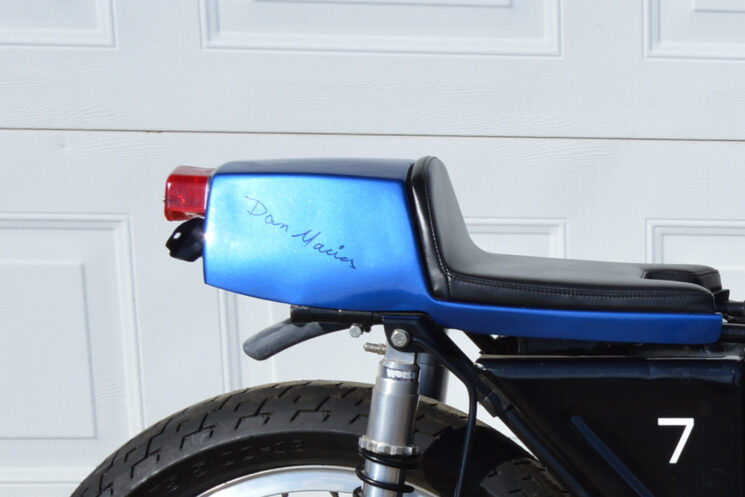
The rear shocks are from Works and the rear set footpegs are from Tarozzi. Being an old British motorcycle, the gear shift is on the right and the brake pedal is on the left.
Surprisingly (but gladly so), the bike is road-legal, complete with a headlight that shines through the front fairing, a tail light, a numberplate bracket, and a horn. The bike is being offered for sale via Iconic Motorbikes and, as far as race bikes for the street go, makes for a compelling case. We’ll be watching this one with interest.